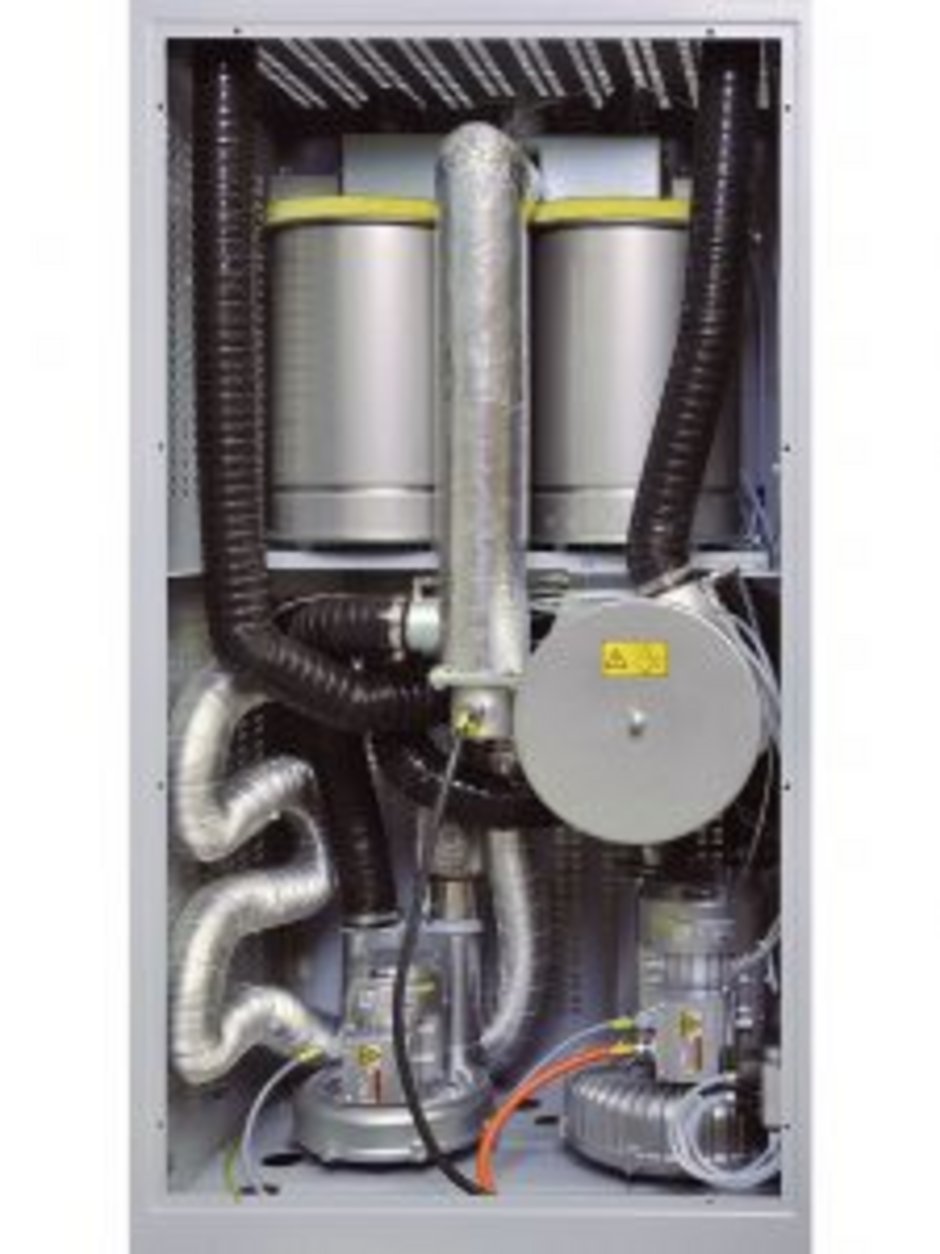18 - How do dry air dryers work?

Dry air dryers can be categorized as either desiccant dryers or compressed air dryers. Though both designs use dry air, they are each based on different technology. This article details desiccant dryers; compressed air dryers will be covered in the next article.
Desiccant dryers are based on a simple principle: hot dry air is passed through the granulate, to release the moisture, which is then adsorbed in a hygroscopic desiccant material called molecular sieve. The desiccant material is insulated, and is usually regenerated at regular intervals or as need dictates. State-of-the-art dryers are outfitted with two or more desiccant cartridges or a wheel to ensure continuous operation, and to meet required throughput. A major benefit of desiccant dryers is that they operate on the basis of a defined dew point, independent of ambient air conditions. In most cases, a dew point of -20°C combined with a moderate drying temperature is sufficient to reach the required residual moisture. If the drying temperature is too high, additives can diffuse from the plastic granulate being dried, and become attached to the molecular sieve, causing damage.
The air dried using the molecular sieve is then heated and fed into the bottom of the drying bin; where it rises up passing through the plastic granulate. The drying bin should be kept full at all times, and the drying process time must be complete before removing the first load of material. During continuous operation, the granulate moves slowly down against the dry air flow, from the top of the drying bin to the outlet at the bottom. The process is comparable with that of a counter-current heat exchanger. Heat transfer from the hot dry air to the granulate causes moisture to evaporate off the material. The process air, now entrained with moisture, is drawn upward out of the drying bin; it is then passed through a filter to remove dust particles. The air then moves through a heat exchanger before reaching the desiccant cartridge, where the moisture is adsorbed by the molecular sieve.
Depending on the mode of operation, the dryers can be set to automatically cycle to a fresh cartridge or section of wheel – at regular intervals or based on the dew point – and initiate the regeneration process. This entails passing hot air through the molecular sieve, causing the stored moisture to evaporate and be exhausted. When the process is finished, the cartridge or wheel section is ready for the next cycle.
You ask yourself how dry-air dryers look in practice? You can find out on www.motan.com
